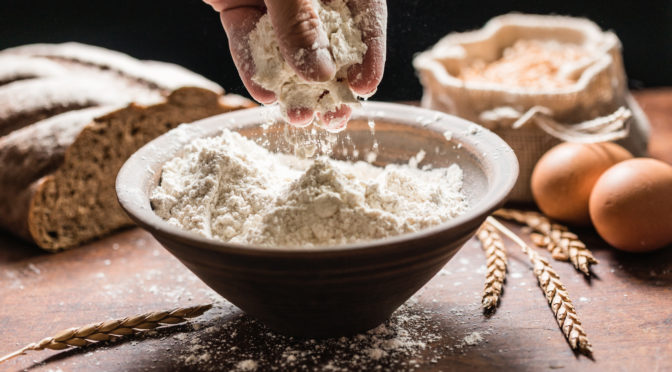The Strength Of Flour Discover The Differences. As you may have noticed, flours are not all the same, they differ not only by the name of the manufacturer, nor just by the type which is clearly specified on the front of the bag: Type 0, Type 00, Integral etc..
The most important thing that is often not mentioned is the so-called "Strength of Flours" indicated by the symbol W. This symbol is certainly the most important thing to take into consideration when we are faced with the choice of which one to buy, this symbol represents the quantity of proteins contained in it.
The Strength Of Flour Discover The Differences
In a few simple words, the use and the same processing method that we are going to apply depends on this symbol. We can classify the various categories of flours in: Weak, Average, Strong and very strong. This classification makes us understand the water absorption capacity for each type of flour so that the best gluten mesh for each product is created.
The work of proteins
Glutenin and Gliadin are the two main ones protein contained in our flour. Glutenin helps us to make the elastic dough responsible for the gluten mesh. Gliadin helps us to preserve the gluten mesh during drafting, preventing it from being destroyed.
As usual, I'll give you an example regarding pizza: Using flour with a strength greater than w240, perfect for pizza and bakery we will have a dough with an excellent gluten mesh and the gliadin contained in it will ensure that the gluten mesh resists the strong stresses of the drafting.
The strength of the flour
Unfortunately, the symbol W is not indicated in all types of flour, so we just have to read the protein content on the bag.
Flour 00: it is the most used even if it is the weakest flour on the market. Its strength ranges from W90 to W180. Suitable for biscuits, breadsticks and shortcrust pastry that do not want long leavening.
Flour 0: It has an average strength with 10 the 12% protein. His W goes from 180 to 280. With a water absorption equal to 60% about its weight is suitable for medium leavening doughs, perfect for pizza bread, pasta and various bakery products.
Strong Flours
Flour 1: Come on, come on 180 to 300 and a percentage of protein that reaches up to 14, they absorb a lot of water and is suitable for doughs with long leavening and aging in the fridge that can reach up to 4-5 days. Not recommended for quick doughs at home. Perfect for bread, pizza and focaccia but with long maturations.
Flour 2: It is already noticeable from the darker color that it contains a lot of bran, has a strength W that can even reach 350. It absorbs a lot of water and is suitable for long leavening.
Other flours
Wholemeal flour: It has a very high strength and is suitable for long leavening. Wholemeal flour is difficult to rise so I suggest you mix it with a weaker type flour 0 the 00.
The strength of the flour is the basis of the pizza chef's work. During our professional practical courses to become professional pizza chefs, this topic is addressed on the first day of the course. If you are interested in becoming an excellent pizza chef follow this link.
Conclusions
If, on the other hand, you do not have the time or resources to attend the practical course in person, I remind you that here on our site there is a fantastic "Pizzaiolo Online Course" that you can download on your PC or mobile phone and follow from the comfort of your home during your free time. You'll find it here.
If you haven't already, download my latest book of delicious pizzeria recipes, is called: NOT ONLY PIZZA - What should have all the pizzerias in your menu. You'll find it here.
See you soon
Silvio Cicchi
